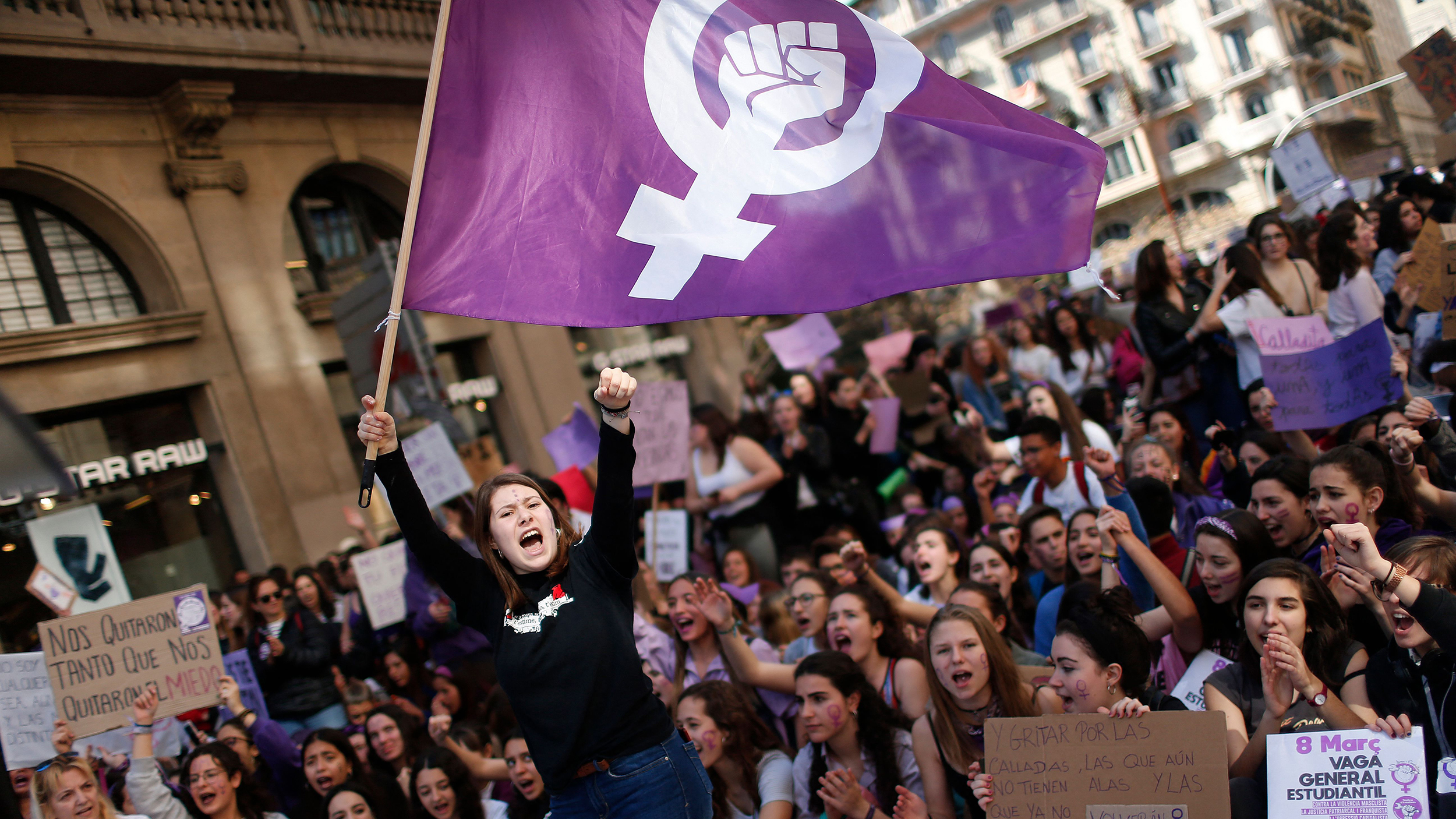The waves of feminism
FIRST WAVE
First wave feminism was a late-19th and early-20th century phenomenon that brought about a plethora of changes, most noticeably women’s suffrage.
Many early feminist activists became politically engaged through the anti-slavery movement. Fighting hard for the rights of black men, they realized that they probably deserved to vote and own land as well. Rockstar First-waver Elizabeth Cady Stanton called together a bunch of women in bloomers at the Seneca Falls Conference and issued a Declaration of Sentiments, expressing many of the ways in which women’s rights were being limited. The clearest political success of the First Wave was of course the passing of the 19th Amendment in 1920. But a lot of other feminist magic happened at that time as well, including the admirable efforts of sex-positive goddess Margaret Sanger who was working in the early 1900’s to make birth control legal and accessible. 100 years later we are still fighting for this cause.
SECOND WAVE:
(aka Your Mama’s Feminism):
Despite the many amazing changes it brought about in our world, second-wave feminism is the feminism everyone is afraid of. And by everyone I mean the patriarchy.
The institutionalized patriarchy of the society we live in as well as the little bit of patriarchy that lives in each of us. Coming about in the 1960’s, Second wave feminism was also part of a widespread social change movement that included of course, civil rights and gay rights activism as well. Second-wave feminism spread through small consciousness-raising groups where women joined together to discuss how sexism affected their life, work, and family.
Second wave projects focused on economic and social inequalities between the genders, and highlighted injustices like the glass ceiling and the wage gap in business, as well as the hyper-sexualization and commercialization of the female body.
Major accomplishments of second-wave feminism were the institution of sexual harassment laws, and the passing of Title IX, which formally invited women into high school and collegiate athletics.
Several major sex-negative feminists emerged from the social criticism arm of the Second Wave, including anti-porn crusaders Andrea Dworkin and Catherine MacKinnon. While these women did the movement admirable service in bringing into question the media colonization of the female body, the inherent erotophobia of their analysis cast a negative light on feminism in many circles. The patriarchal media, eager to undercut the impressive force of the Second-Wave movement, latched on to this sex-negativity as a way to make feminists look angry and man-hating, or cold and unfeeling. A sad characterization of a powerful, beautiful movement towards increased justice and compassion.
THIRD WAVE
Third Wave feminism was part evolution of and part reaction to Second Wave Feminism. While Second-Wavers relied on the shared experience of women to gain political clout, Third-Wavers are staunchly anti-essentialist, and acknowledge the worlds of difference between women in different walks of life. Third wavers embrace a variety of feminisms, emphasizing diversity in all its forms: race, gender, class, sexual preference, political views and lifestyle.
For me, one of the most freeing things about the third wave is the opportunity to reincorporate sexuality and femininity into the feminism question. I find that the values of a sex-positive mindset and the politics of feminism are intimately connected. More on that in future blogs.
IS THE END NEAR?
A quick note on the death of feminism. Almost since the inception of the feminist movement various media reports have hailed the death or end of feminism. Anything from the return of high-heeled shoes to an increase in the power of the religious right to women choosing to stay home and raise children has been interpreted as proof that feminism is dead. Bull! When you hear this, I urge you to laugh, cry, scream, but don’t believe the HYPE!!!. Of course it is in the interest of the patriarchy to foretell the death of feminism. But movements don’t work that way. Not in a world of dreamers and shakers and music makers. Sometimes movements are slow, but as long as we have daughters who dream of being president, Feminism is alive and well.
THE F-WORD
It’s time to take this word out of the trash bin. I was afraid of calling myself a Feminist for a long time. Even though I knew I was one. It sounded stuffy, and there weren’t a lot of African American women involved with the movement at the time. It sounded sex-negative or anti-male or excessively political. I thought they might make me go to meetings or something if I said I was one.
But guess who wants you to think that? I’ll give you a hint, it’s not the ladies. I say we not only nee to reclaim the word, we have to turn it on it’s head, and make it a positive affirmation! Write it on your t-shirt, tattoo on your breasts, break out your bumper-stickers, and proudly proclaim, I am a FEMINIST!!!
And men… there’s little that turns on a third-waver like me more than a man who knows the feminist ropes
As bell hooks says, Feminism is for Everyone!
You can wear a bra and be a feminist,
You can be a man and be a feminist,
You can love porn and be a feminist,
You can live in the suburbs, you can be a stripper, you can be a Christian or a banker or a millionaire or a supermodel or a stay-at-home mom or a physics professor.
The only thing you cant do? Ignore, accept, or support the sexist underpinnings of our society.




